RBS 2009 Annual Report Download - page 134
Download and view the complete annual report
Please find page 134 of the 2009 RBS annual report below. You can navigate through the pages in the report by either clicking on the pages listed below, or by using the keyword search tool below to find specific information within the annual report.-
 1
1 -
 2
2 -
 3
3 -
 4
4 -
 5
5 -
 6
6 -
 7
7 -
 8
8 -
 9
9 -
 10
10 -
 11
11 -
 12
12 -
 13
13 -
 14
14 -
 15
15 -
 16
16 -
 17
17 -
 18
18 -
 19
19 -
 20
20 -
 21
21 -
 22
22 -
 23
23 -
 24
24 -
 25
25 -
 26
26 -
 27
27 -
 28
28 -
 29
29 -
 30
30 -
 31
31 -
 32
32 -
 33
33 -
 34
34 -
 35
35 -
 36
36 -
 37
37 -
 38
38 -
 39
39 -
 40
40 -
 41
41 -
 42
42 -
 43
43 -
 44
44 -
 45
45 -
 46
46 -
 47
47 -
 48
48 -
 49
49 -
 50
50 -
 51
51 -
 52
52 -
 53
53 -
 54
54 -
 55
55 -
 56
56 -
 57
57 -
 58
58 -
 59
59 -
 60
60 -
 61
61 -
 62
62 -
 63
63 -
 64
64 -
 65
65 -
 66
66 -
 67
67 -
 68
68 -
 69
69 -
 70
70 -
 71
71 -
 72
72 -
 73
73 -
 74
74 -
 75
75 -
 76
76 -
 77
77 -
 78
78 -
 79
79 -
 80
80 -
 81
81 -
 82
82 -
 83
83 -
 84
84 -
 85
85 -
 86
86 -
 87
87 -
 88
88 -
 89
89 -
 90
90 -
 91
91 -
 92
92 -
 93
93 -
 94
94 -
 95
95 -
 96
96 -
 97
97 -
 98
98 -
 99
99 -
 100
100 -
 101
101 -
 102
102 -
 103
103 -
 104
104 -
 105
105 -
 106
106 -
 107
107 -
 108
108 -
 109
109 -
 110
110 -
 111
111 -
 112
112 -
 113
113 -
 114
114 -
 115
115 -
 116
116 -
 117
117 -
 118
118 -
 119
119 -
 120
120 -
 121
121 -
 122
122 -
 123
123 -
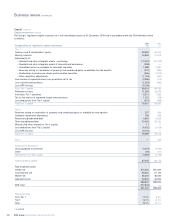 124
124 -
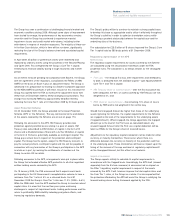 125
125 -
 126
126 -
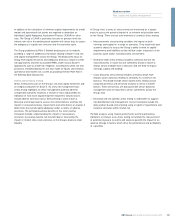 127
127 -
 128
128 -
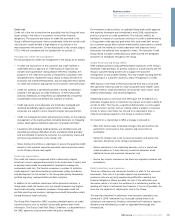 129
129 -
 130
130 -
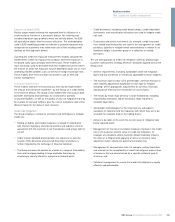 131
131 -
 132
132 -
 133
133 -
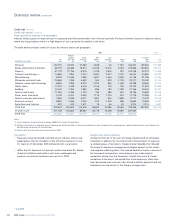 134
134 -
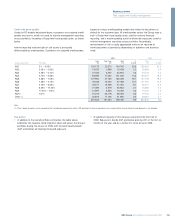 135
135 -
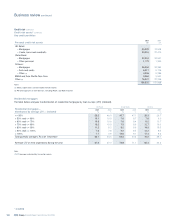 136
136 -
 137
137 -
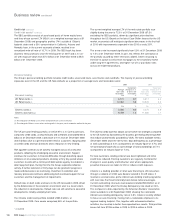 138
138 -
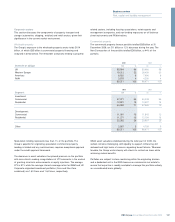 139
139 -
 140
140 -
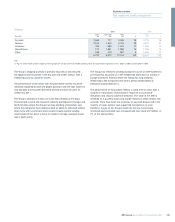 141
141 -
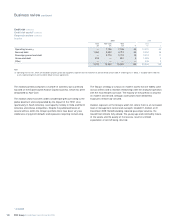 142
142 -
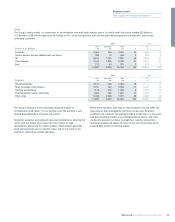 143
143 -
 144
144 -
 145
145 -
 146
146 -
 147
147 -
 148
148 -
 149
149 -
 150
150 -
 151
151 -
 152
152 -
 153
153 -
 154
154 -
 155
155 -
 156
156 -
 157
157 -
 158
158 -
 159
159 -
 160
160 -
 161
161 -
 162
162 -
 163
163 -
 164
164 -
 165
165 -
 166
166 -
 167
167 -
 168
168 -
 169
169 -
 170
170 -
 171
171 -
 172
172 -
 173
173 -
 174
174 -
 175
175 -
 176
176 -
 177
177 -
 178
178 -
 179
179 -
 180
180 -
 181
181 -
 182
182 -
 183
183 -
 184
184 -
 185
185 -
 186
186 -
 187
187 -
 188
188 -
 189
189 -
 190
190 -
 191
191 -
 192
192 -
 193
193 -
 194
194 -
 195
195 -
 196
196 -
 197
197 -
 198
198 -
 199
199 -
 200
200 -
 201
201 -
 202
202 -
 203
203 -
 204
204 -
 205
205 -
 206
206 -
 207
207 -
 208
208 -
 209
209 -
 210
210 -
 211
211 -
 212
212 -
 213
213 -
 214
214 -
 215
215 -
 216
216 -
 217
217 -
 218
218 -
 219
219 -
 220
220 -
 221
221 -
 222
222 -
 223
223 -
 224
224 -
 225
225 -
 226
226 -
 227
227 -
 228
228 -
 229
229 -
 230
230 -
 231
231 -
 232
232 -
 233
233 -
 234
234 -
 235
235 -
 236
236 -
 237
237 -
 238
238 -
 239
239 -
 240
240 -
 241
241 -
 242
242 -
 243
243 -
 244
244 -
 245
245 -
 246
246 -
 247
247 -
 248
248 -
 249
249 -
 250
250 -
 251
251 -
 252
252 -
 253
253 -
 254
254 -
 255
255 -
 256
256 -
 257
257 -
 258
258 -
 259
259 -
 260
260 -
 261
261 -
 262
262 -
 263
263 -
 264
264 -
 265
265 -
 266
266 -
 267
267 -
 268
268 -
 269
269 -
 270
270 -
 271
271 -
 272
272 -
 273
273 -
 274
274 -
 275
275 -
 276
276 -
 277
277 -
 278
278 -
 279
279 -
 280
280 -
 281
281 -
 282
282 -
 283
283 -
 284
284 -
 285
285 -
 286
286 -
 287
287 -
 288
288 -
 289
289 -
 290
290 -
 291
291 -
 292
292 -
 293
293 -
 294
294 -
 295
295 -
 296
296 -
 297
297 -
 298
298 -
 299
299 -
 300
300 -
 301
301 -
 302
302 -
 303
303 -
 304
304 -
 305
305 -
 306
306 -
 307
307 -
 308
308 -
 309
309 -
 310
310 -
 311
311 -
 312
312 -
 313
313 -
 314
314 -
 315
315 -
 316
316 -
 317
317 -
 318
318 -
 319
319 -
 320
320 -
 321
321 -
 322
322 -
 323
323 -
 324
324 -
 325
325 -
 326
326 -
 327
327 -
 328
328 -
 329
329 -
 330
330 -
 331
331 -
 332
332 -
 333
333 -
 334
334 -
 335
335 -
 336
336 -
 337
337 -
 338
338 -
 339
339 -
 340
340 -
 341
341 -
 342
342 -
 343
343 -
 344
344 -
 345
345 -
 346
346 -
 347
347 -
 348
348 -
 349
349 -
 350
350 -
 351
351 -
 352
352 -
 353
353 -
 354
354 -
 355
355 -
 356
356 -
 357
357 -
 358
358 -
 359
359 -
 360
360 -
 361
361 -
 362
362 -
 363
363 -
 364
364 -
 365
365 -
 366
366 -
 367
367 -
 368
368 -
 369
369 -
 370
370 -
 371
371 -
 372
372 -
 373
373 -
 374
374 -
 375
375 -
 376
376 -
 377
377 -
 378
378 -
 379
379 -
 380
380 -
 381
381 -
 382
382 -
 383
383 -
 384
384 -
 385
385 -
 386
386 -
 387
387 -
 388
388 -
 389
389 -
 390
390
 |
 |

Business review continued
RBS Group Annual Report and Accounts 2009132
Credit risk continued
Credit risk assets*continued
Asset quality by industry and geography
Industry analysis plays an important part in assessing potential concentration risk in the loan portfolio. Particular attention is given to industry sectors
where the Group believes there is a high degree of risk or potential for volatility in the future.
The table below analyses credit risk assets by industry sector and geography.
2009 2008
Western
Europe North Asia Latin of which
UK (excl. UK) America Pacific America Other (1) Total Core Total
Industry sector £m £m £m £m £m £m £m £m £m
Personal 120,720 23,530 37,680 2,948 63 1,361 186,302 165,562 197,888
Banks and financial institutions 38,775 66,698 18,817 13,158 10,216 5,305 152,969 133,900 180,504
Property 61,779 27,736 8,315 2,478 2,924 507 103,739 57,073 112,980
Transport and storage (2) 14,565 7,954 7,514 5,841 2,917 7,370 46,161 30,863 58,995
Manufacturing 9,309 14,646 7,965 3,627 1,643 3,948 41,138 31,199 67,846
Wholesale and retail trade 15,584 7,458 5,497 945 829 1,704 32,017 25,180 35,180
Telecom, media and technology 8,956 7,956 5,312 2,232 804 1,528 26,788 18,554 42,374
Public sector 11,091 4,448 6,016 2,109 279 760 24,703 21,823 39,890
Building 10,303 7,494 1,852 836 183 1,098 21,766 16,642 29,297
Tourism and leisure 11,396 3,268 2,700 755 586 481 19,186 15,583 19,528
Power, water and waste 4,745 6,197 3,502 1,179 1,215 941 17,779 12,055 26,628
Natural resources and nuclear 2,554 3,546 5,511 1,861 844 2,895 17,211 12,479 25,318
Business services 8,981 2,056 2,324 675 1,029 588 15,653 13,395 14,497
Agriculture and fisheries 921 618 1,671 18 64 82 3,374 3,214 3,951
2009 Total 319,679 183,605 114,676 38,662 23,596 28,568 708,786 557,522 854,876
of which Core 271,758 133,824 89,487 28,718 14,048 19,687 557,522
2008 Total 326,639 225,870 178,139 56,074 31,235 36,919 854,876
Notes:
(1) ‘Other’ comprises Central and Eastern Europe, Middle East, Central Asia and Africa.
(2) Excludes net investment in operating leases in Shipping and Aviation portfolios as they are accounted for as part of property, plant and equipment; however operating leases are included in the
monitoring and management of these portfolios.
(3) Certain sector and sub-sector classes were refined in 2009.
Key points
•Exposures have decreased materially across industry sectors and
geographies, with the exception of the UK where exposure is only
2% lower at 31 December 2009 compared with a year earlier.
•Within the UK, exposure to corporate sectors was down 8%. Banks,
financial institutions and public sector were unchanged and
exposure to personal customers was up 6% in 2009.
Single name concentrations
During the first half of the year, the Group implemented an enhanced
framework to address the risk arising from concentrations of exposure
to related groups of borrowers. Despite market illiquidity that reduced
the scope for exposure management strategies against certain assets,
and negative credit migration, that created additional cases in excess of
the framework’s parameters, some progress was made against
exceptions arising from the framework. Overall there were 9% fewer
exceptions at the end of the period than at the beginning. Plans have
been developed and continue to be refined to deliver alignment with the
framework over the course of the Group’s strategic plan.
* unaudited
